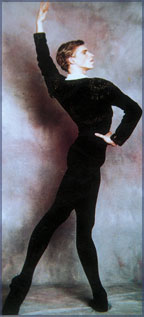|
DAILY NEWS ONLINE |
|
|
|
OTHER EDITIONS |
|
|
|
OTHER LINKS |
 |
Minkus's brilliant Don Quixote
|
|
|
Minkus who arrived in St. Petersburg in 1853 was appointed as the music director of an orchestra belonging to Prince Yassupor. However, on meeting with choreographer, Arthur St. Lion, Minkus got involved in ballet. He scored for his version of Don Quixote that was mounted in Paris and at St. Petersburg during the 1860s.
He commuted between these two cities with St. Lion. Minkus became a teacher at the Moscow Conservatoire in 1861. In 1869 Marius Petipa produced Don Quixote for the Bolshoi Balltet Theatre to the delightful scoring of Minkus. The staging of this ballet in Moscow gave the impetus for others to follow.
The 1869 December production was such a great success. The St. Petersburg troupe extended this version when they remounted it. It became such an influential ballet that choreographer, Alexander Gorsky undertook a major production of the Petipa staging in 1900.
This he did with the idea of falling in line with the concepts of the Moscow Arts theatre. It is this version that is still repeated and held in the repertory of the Moscow Bolshoi Ballet. However, two other ballet masters, Kasyan Goleizovsky and Rostislav Zakhnov rephrased the music of Minkus as well as few melodies by other composers to give a different twist to this ballet.
|
|
Almost a century later, Yuri Grigovich who was the director of the Bolshoi ballet produced Don Quixote in 1983 for the Royal Danish Ballet in Copenhagen and a decade later, mounted this version at the Bolshoi Ballet.
Raging fire
Don Quixote caught on like a raging fire by other companies and as they started modifying to keep with time, the Minkus production remained as was the production of the Bolshoi Ballet, especially the Gorsky staging. In St. Petersburg itself an edited text saw the inclusion of traditional interpolations by Goleizovsky and Zakharov and this production was revived by the Bolshoi Ballet in 1989.
The three-act ballet
In the town square of Barcelona, a crowd was seen in the vicinity where Lorenzo had his inn. Among this crowd was his beautiful and fun loving daughter, Kitri and the town's barber, Basil were lovers. It was not to the liking of Lorenzo who preferred the noble suitor, Gamache for his pretty girl.
There was merry making when the crowd greeted a dancer and a toreador, Espade who ushered Don Quixote to the square. He was accompanied by Sancho. Mistaking Lorenzo to be the owner of the castle, he was greeted with much respect by Don Quixote who in turn invited him to his tavern. Sancho was surrounded by girls who teased him. Don Quixote was amazed by the beauty of Kitri and mistook her to be his Dulcinea.
Sancho seized this opportunity to steal some food from the kitchen and the boys gave chase. In the confusion Kitri and Basil slipped away and Lorenzo, Gamache and Don Quixote went out searching for them. (ACT 1).
In the meantime, Kitri and Basil wander into a gypsy camp. Don Quixote and Sancho too are invited to watch the puppet show. Don Quixote is carried away by the show and lapses into a trance when he is again haunted by Dulcinea. Mistaking the show to be a reality, he lunges forward with his sword to rescue dulcinea who appears as the unhappy heroine.
The frightened gypsies scatter while a horrified Sancho tries to restrain him. Exhausted with the ordeal, Don Quixote fall asleep. He dreams himself in a beautiful garden where Kitri has assumed the guise of Dulcinea.
Kitri and Basil who had been hiding in the tavern are discovered by Lorenzq, Gamache and Don Quixote. Lorenzo who has planned to give his daughter to Gamache forces Kitri to agree to marry him and on seeing this and by prior agreement, Basil pretends to take his own life and falls to the ground. Kitri rushes and sobs over his 'dead' body.
Don Quixote overcome by his noble indignation, accuses Lorenzo of his unkindness, threatens him with a sword. Overcome with fear, he agrees to let his daughter marry the 'dead' Basil. The pretending Basil jumps for joy and is united with his beautiful Kitri. (Act II)
At the wedding festivities Don Quixote and Sancho are the honoured guests. People from all walks of life are invited for the ceremony. As the celebrations continue, the couple dance and perform a Pas De Deux for Don Quixote who is happy for them.
In the last scene, Don Quixote and his Sancho set off to the sounds of trumpets as the knight errant and his squire in search of new adventure. (Act III)
Don Quixote which is a flamboyant story has such appeal both to the young and old is constantly staged as a drama, filmed and mounted as ballets over and over again. In ballet, it owes its success to the grand scoring of composer, Ludwig Minkus.
..................................
|
|
 |
 |
 |
 |


